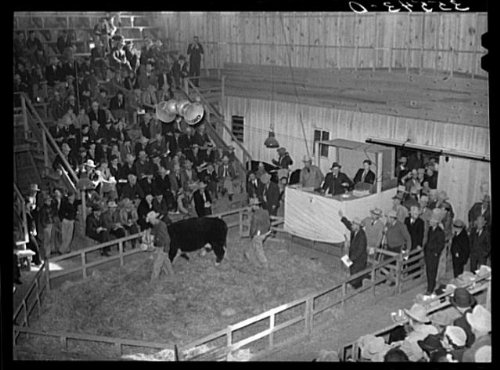 "With only four giant meatpackers in the market today, the cash market for cattle has become competitive in name only. Just 25 or 30 years ago, a cattle producer might have had a dozen meatpackers to choose from. Fattened cattle were sold at auction barns where meatpackers big aggressively for the best animals, one upping another in heated auctions. It was the best kind of price discovery, transparent and built on vigorous competition. Bad cattle fetched low prices, the best cattle fetched the highest price the market would bear.
"With only four giant meatpackers in the market today, the cash market for cattle has become competitive in name only. Just 25 or 30 years ago, a cattle producer might have had a dozen meatpackers to choose from. Fattened cattle were sold at auction barns where meatpackers big aggressively for the best animals, one upping another in heated auctions. It was the best kind of price discovery, transparent and built on vigorous competition. Bad cattle fetched low prices, the best cattle fetched the highest price the market would bear."Those auctions for finished cattle have ended. The market, such as it is, is played out in a series of phone calls as meatpackers dial up the
feedlots and tell them what they are willing to pay. The competition can be pallid. If two meatpackers don't want to buy cattle during any given week, for example, that only leaves two buyers to choose from: not the best scenario for igniting a bidding war. If three of the meatpackers aren't in the market, that would leave only one buyer, who could offer a take-it-or-leave-it price.
"This gives meatpackers a chokehold over the independent feedlot owners and the ranchers that supply them."
 excerpted from:
excerpted from:The Meat Racket
The Secret Takeover of America's Food Business
by Christopher Leonard
Simon & Schuster, 2014
Artwork: Auction of Hereford cattle at the San Angelo Fat Stock
Show, 1940, in San Angelo,Texas.
Crying Out Loud
Outrider Reading Group
Outrider
Farm Magazines